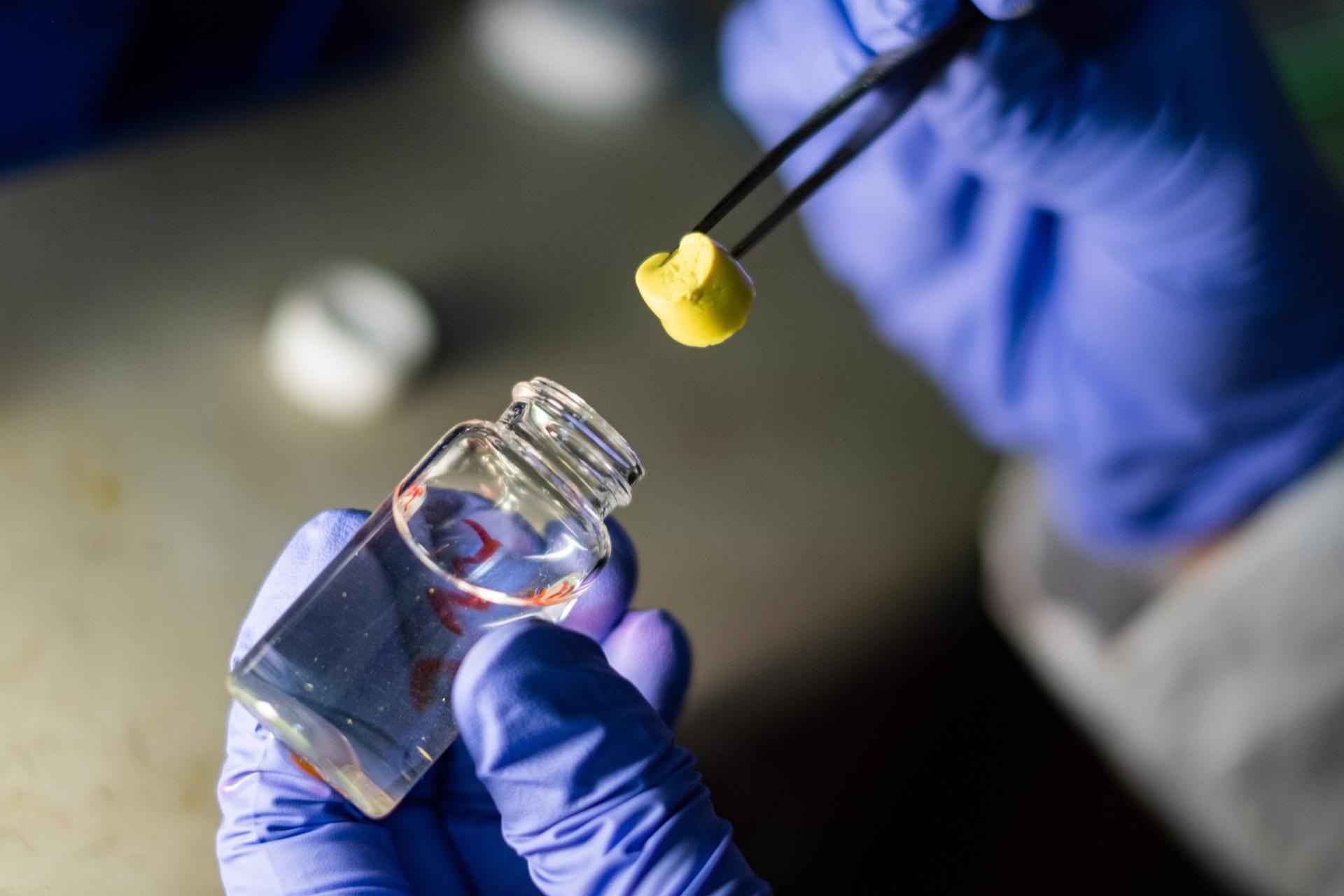Jun 9 2021
Rice University has developed a simple chemical process that produces light yet highly absorbent aerogels that can take a beating.
 A simple chemical process developed at Rice University creates light and highly absorbent aerogels based on covalent organic frameworks for environmental remediation or as membranes for batteries and other applications. Image Credit: Jeff Fitlow.
A simple chemical process developed at Rice University creates light and highly absorbent aerogels based on covalent organic frameworks for environmental remediation or as membranes for batteries and other applications. Image Credit: Jeff Fitlow.
Covalent organic frameworks (COFs) are crystal structures with robust molecular bonds. These structures can create a porous aerogel that can be used as a custom membrane in various devices, including batteries, or even as an absorbent to eliminate pollutants from the environment.
Powders are the most common kind of conventional COFs. Chemical and biomolecular engineer Rafael Verduzco; study lead authors and Rice graduate students Dongyang Zhu and Yifan Zhu; and their collaborators from Rice’s Brown School of Engineering have identified a way to synthesize COF aerogels that can be created in any shape and size, restricted only by the reaction chamber.
Described in the American Chemical Society's Chemistry of Materials, the process uses COF monomers, which is both a catalyst and a solvent. When these monomers are combined and heated to 80 °C (176 °F), they turn into a uniform gel. When the gel is washed and dried to remove the solvent, it leaves behind a scaffold-like aerogel with pores ranging from 20 to 100 µm.
The big advantage of polymers is that you can dissolve them in a solvent, you can spray coat, spin coat and dip coat them, and they’re easy and cheap to work with. But COFs are not. They’re an insoluble powder and hard to do anything with, but they are really promising for applications because you can design or engineer them almost any way you want on the molecular level.
Rafael Verduzco, Chemical and Biomolecular Engineer, Rice University
“They’re like Lego blocks and you can pick the molecular shapes, sizes and characteristics you’d like to include in the final material. We were looking for ways to make COFs easier to work with, more like polymers, and we found that under particular reaction conditions they would form a gel,” he said. “When you extract the solvent, you get this very light foam, or aerogel,” added Verduzco.
COF aerogels, according to Verduzco, could be a useful addition to industrial absorbents that are already being used for remediation. This is because the porous structures of these aerogels can be modified.
The laboratory created six aerogels and observed that their remediation characteristics with different oils, dyes and gold nanoparticles were considerably faster and better than COF powders. In a test using iodine vapor, which is a product of nuclear fission, the aerogel absorbed 7.7 g of iodine for each gram of aerogel, which is substantially better than a COF powder of the same substance.
The aerogels could be cleaned and reused at least 10 times without deforming, noted the researchers.
They’re pretty soft but you can squish them by hand and they spring back.
Rafael Verduzco, Chemical and Biomolecular Engineer, Rice University
According to Verduzco, COFs have even greater potential as membranes to isolate components in sophisticated batteries, which is the focus of a new review article headed by Dongyang Zhu in Advanced Functional Materials. COFs could also imitate biological membranes.
Nobody’s figured out how to efficiently separate a mixture of ions or molecules that are about the same size and shape, but with this class of materials, we can precisely control the pore sizes and shapes.
Rafael Verduzco, Chemical and Biomolecular Engineer, Rice University
“Biological membranes separate ions of the same size and charge through small changes in pore functionality that preferentially bind one ion or the other. I think we can start to make synthetic materials that have similar properties,” added Verduzco.
The laboratory is now developing a library of COF aerogels to test in applications.
“There’s really a lot to explore here,” concluded Verduzco.
Absorbent aerogels
Video Credit: Rice University.
Journal reference:
Zhu, D., et al. (2021) Pure Crystalline Covalent Organic Framework Aerogels. Chemistry of Materials. doi.org/10.1021/acs.chemmater.1c01122.